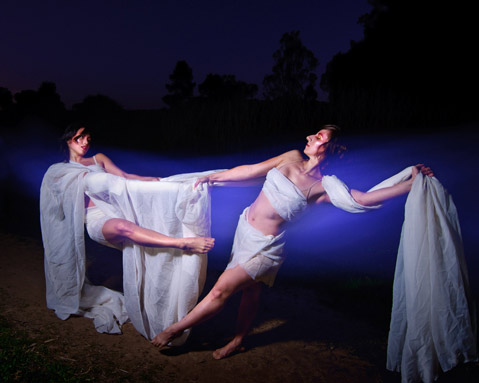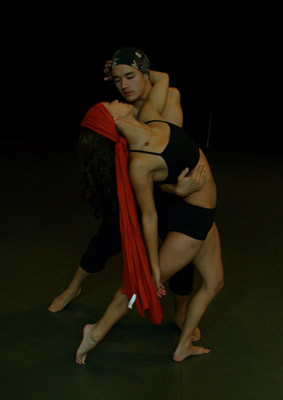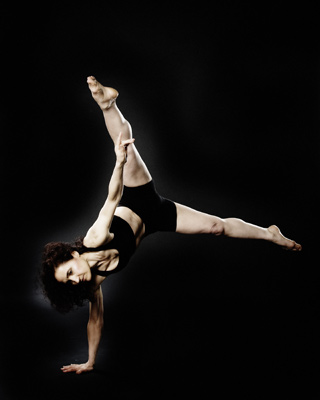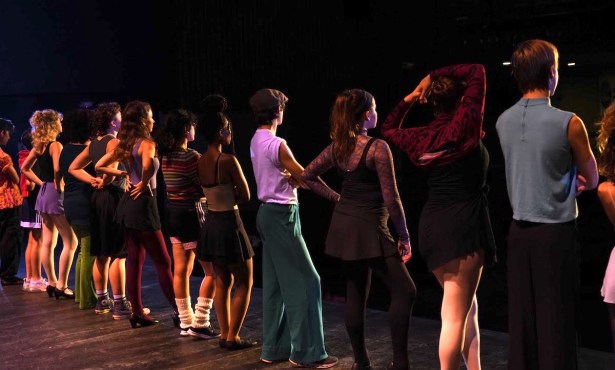New Works in Dance at Center Stage
Area Choreographers and Dancers Plan to Perform All Premieres

Each year, the Santa Barbara Dance Alliance sponsors this important event that uses a rigorous audition process to select a dozen or so choreographers and dancers to premiere new work. Dance, especially in a relatively small community such as ours, enjoys an unusual degree of collaborative inspiration, and the pieces selected for this year’s New Works all, in one way or another, reflect tight connections between the choreographers and performers. Another refreshing aspect of the progressive dance scene as it comes together for New Works is the uniformly high level of discourse that surrounds the work. Not only do these artists live, breath, eat, and sleep dance, they talk about it in rich and satisfying ways as well. The participants in this year’s New Works program are Alonzo Johnson and Brittany Castillo, Cybil Gilbertson, Christina McCarthy, Robin Bisio and The Independent’s Elizabeth Schwyzer, Erin Martinez, Lauren Serrano, Melanie Johnson, Misa Kelly, Robert Salas, and Valerie Huston. In preparation for this article, I corresponded with Misa Kelly, Robin Bisio, and Christina McCarthy, and the experience of encountering their three very different yet equally fascinating takes on what they are doing left me wishing I could have discussed this experience with every one of the choreographers involved.

Robin Bisio wrote about her collaboration with dancer, poet, and Indy Associate Arts Editor Elizabeth Schwyzer in a way that reflects both Bisio’s devotion to developing talent and Schwyzer’s physical/intellectual “take no prisoners” approach to performance. “Don’t Bring Me Cut Roses” is based on a poem Schwyzer composed while in residence at Esalen, and it incorporates recitation as well as dance. Bisio described it as “very interior — a journey into the center of a flower as well as a romantic history.” She praised Schwyzer’s “range of release techniques and her intelligence and knowledge about dance.” The audience can expect to be amazed, as Bisio reported that Schwyzer “really rocks” in this one.
Misa Kelly’s “Ranunculus” originally was intended as a collaboration between choreographer and solo dancer, but due to a series of mishaps, the task of dancing eventually fell to Kelly herself. In a delightfully droll and self-aware message full of wisdom and insight into the creative process, Kelly outlined for me what this piece has meant to her and where it fits in her life. Having just turned 50, Kelly explained that she had anticipated a month-long celebration of a milestone that she approached with “a great deal of joy, anticipation, and eagerness,” only to discover that, despite her ardent preparations, the reality of aging could not be coerced into becoming an absolute positive for her. Kelly reported that as a result, her dance “became a container for all of this. Its making occurred while I was identifying, accepting, going through, and processing this rite of passage,” adding that it was “the polar opposite of what I expected.” The dance, in which Kelly will be “owning” her age, has left her with the feeling of “a certain sort of power,” and she said she intends to “celebrate that fact with a lot of chutzpah.”

Christina McCarthy teaches dance at UCSB and comes from a strong ballet background. Her work is set on a young group of ballet dancers and is choreographed to “Axis” by Joan Jeanrenaud. McCarthy’s statement about her work moves in yet another direction from those of Bisio and Kelly, describing in detail the technical issues she encountered in the rehearsal and development process. According to McCarthy, “Axis” was a challenging choice of music because “the structure is a 5-4-3 beat repeating pattern and nearly too fast to count.” She added, “For my young dancers, having an irregular meter was difficult enough, but having it change throughout the dance was making them crazy.” Rather than being stymied by this obstacle, McCarthy chose to use the constraint as a point of departure. She explained it this way: “I had initially created the movement phrases without counts, and was in the process of trying to give them some structural landmarks for navigating the music, when we all discovered that it would work better to have the dancers create the fluid timing in their own bodies and without counts. They had to compromise with each other as they had to dance phrases in unison, and they had to be consistent because I am very specific about the counterpoint of the various movements that happen when two or three movement phrases are juxtaposed against each other.”
The results of this choice sound fantastic. McCarthy wrote of her dancers and the approach, “It was thrilling to see the musicality that was emerging and the connections they were making with the other performers in the space and the music. They now breathe the music and live the dance each time they do it … they are taken to a brain zone where the logical escapes and the felt emerges.”
4•1•1
Santa Barbara Dance Alliance presents New Works at Center Stage Theater (751 Paseo Nuevo) on Friday, January 22, at 8 p.m., and Saturday, January 23, at 2 and 8 p.m. For tickets and information, call 963-0408 or visit centerstagetheater.org.



